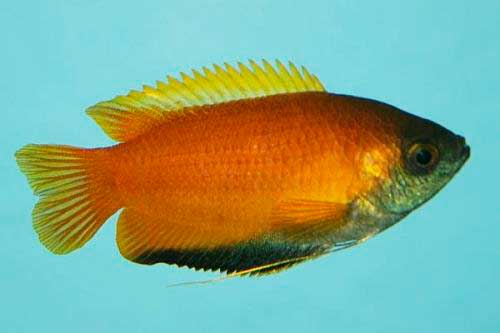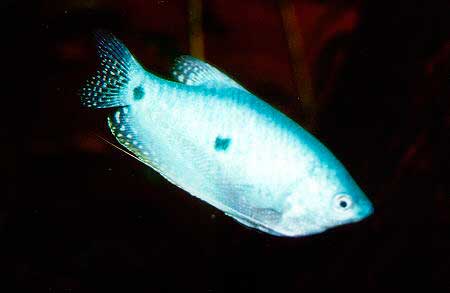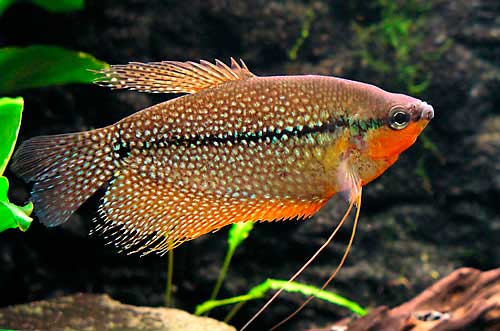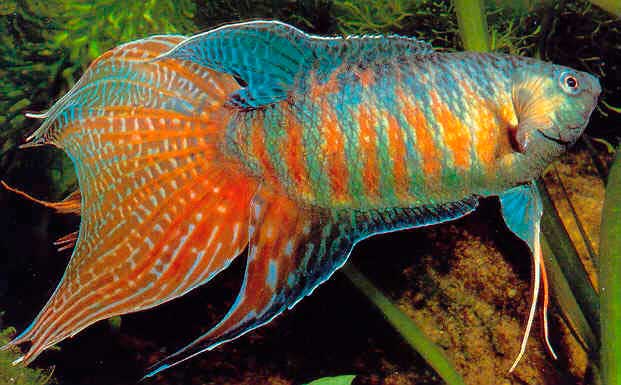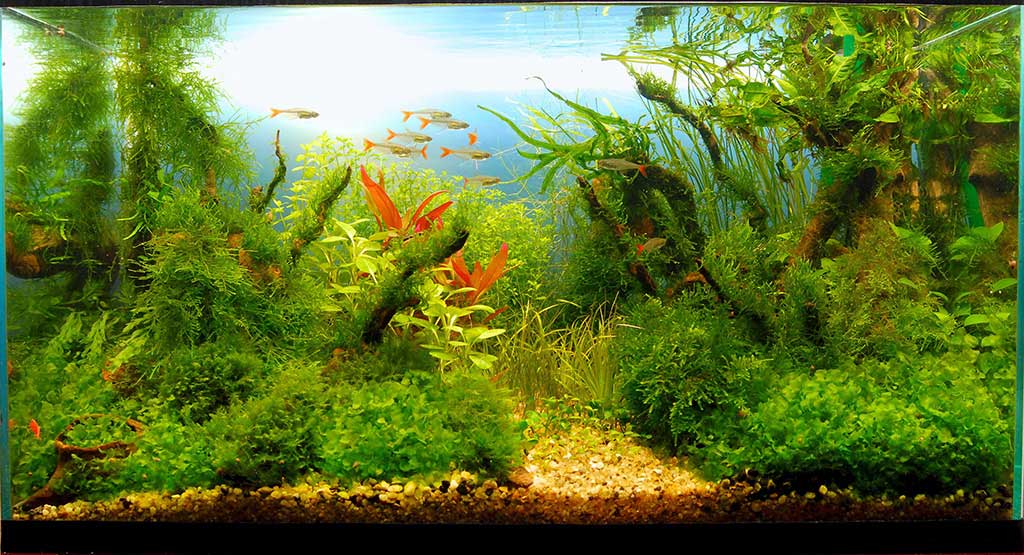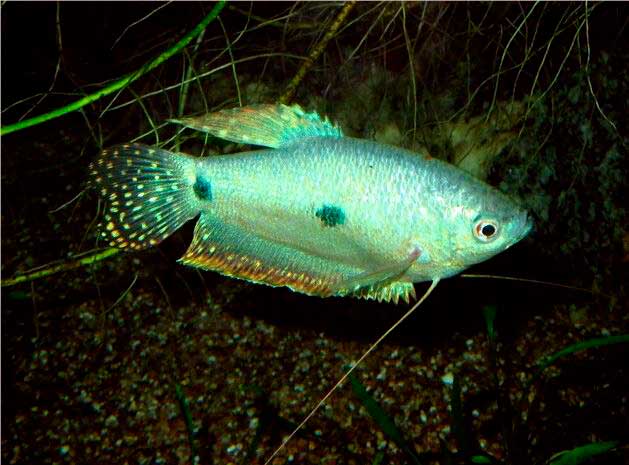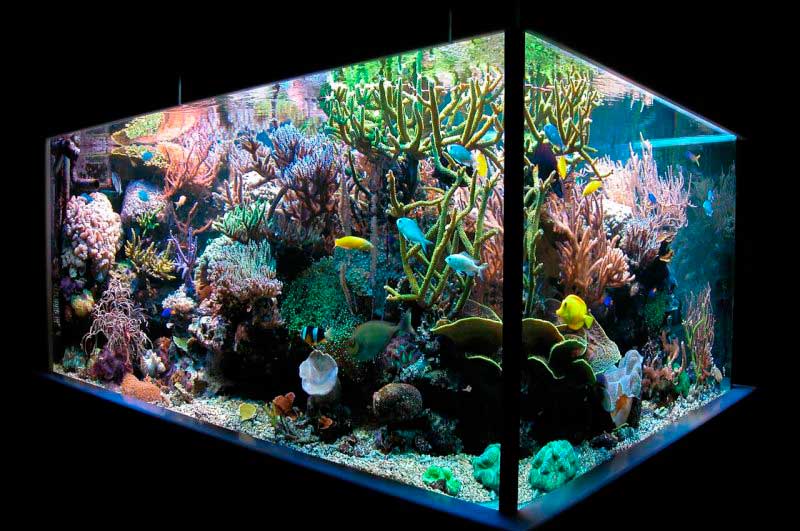Honey gourami is another beautiful fish, firmly settled behind the glass aquariums of amateurs around the world. It belongs to the macropod family, but differs from the macropod in that it is a very peaceful fish. Now this representative of the underwater fauna is increasingly referred to the genus Trichogaster. Previously, it was called Colisa honey, and also belonged to the genus Colisa.
It’s a systematics thing. Apparently, it is very important for someone that colisa chuna is now called Trichogaster chuna. Well, someone on this topic can write a dissertation, defend it and get a degree. I have no desire to go into the maze of classification. The fish doesn’t care what we call it. Only if we knew what she needs conditions for normal existence, as well as do not forget at the time of feeding. And let the scientists do the classification. In the article will be used equally often as the old name (coliza honey) for those who are used to it, and the new (gourami honey) for those who are just now getting acquainted with this amazing fish.
| biological kingdom | Animals |
| biological type | Chordates |
| biological class | Class |
| biological division | Labyrinthine |
| biological Family | Belontium |
| biological Subfamily | Luciocephalins |
| biological genus | Colisa |
| biological species | Colisa chuna |
Latin: Colisa chuna, Trichogaster chuna, Honey Gourami.
Habitat.: Widespread in northeastern India, occurs in Bangladesh, inhabits the basins of the Brahmaputra and Ganges rivers. Prefers densely overgrown places.
Honey gourami description
In terms of size, the coliseum is not large. Aquarium specimens, as a rule, do not exceed four and a half centimeters. In most gourami, the size is much larger. The body is flattened from the sides, high. Dorsal fin, starting approximately from the middle of the body, extends to the tail fin. Just like in lalius, the only species still belonging to this genus. In gourami, as we remember, the dorsal fin does not extend along the entire body. Anal fin begins almost immediately after the pelvic fin and also extends to the base of the caudal fin, which has a rounded shape.
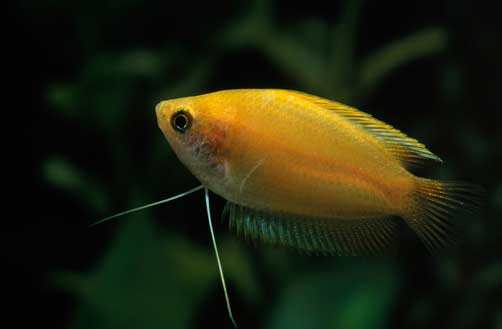
Pectoral fins are transparent small. The pelvic fins have been transformed by natural selection. They’re whiskers. Because of which the species is probably trying to be lumped in with the Nitenosaurs. The entire body is colored amber. During spawning takes wine-red coloration. The midline has a darker tone sometimes up to brown. The dorsal fin has a lemon-yellow border. Coliza labyrinthine fish. Sexually mature are individuals who have reached 6-8 months of age.
Honey gourami Sex differences
The male differs from the female by a more slender body, brighter coloration. Pointed ends of dorsal and anal fins.
Honey gourami maintenance in the aquarium
In the content is not difficult, it can be safely recommended to beginners. From periodic work will only have to feed every day, once a week to change one-fifth of the water to fresh, tempered. And as necessary, periodically weed the thickets of grass.
Aquarium volume
For a pair of fish will be enough vessel volume of ten liters. But since it is better to keep a flock of about ten individuals with a predominance of females, it is better to equip for such a flock pond liters to fifty liters. Females are less decorative, but their predominance will reduce the aggression of the male. And the content of the flock will reduce the anxiety of this fearful panicker. The cover as well as for all labyrinths is needed to reduce the inflow of cold air to the overwater space, from which the coliza will capture air with its mouth.
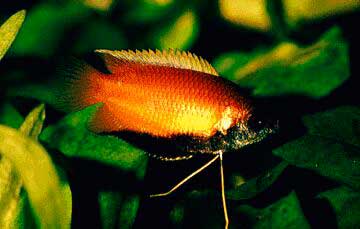
Soil
It is better to take a dark soil. But it should be chemically inert and not dissolve with water, releasing any substances. And also need to take into account the need for fish dense thickets. Standard can be used large gray clean river sand. He and the color is not too bright – Honey Gourami will look good on its background. And for underwater flora with sufficient siltation is an ideal substrate.
Honey Gourami is a shy creature. It prefers to hide among the thickets of underwater flora in case of any danger. If he is deprived of such an opportunity, he will be under constant stress. The benefits of his coloring will not bring it. Plants are suitable for any able to tolerate high temperatures, as well as form dense thickets. You can use vallisneria, elodea, peristolistnik. On the surface must necessarily float plants such as ritchia or cassava. Also desirable plants with wide leaves floating on the surface of the water. Under such leaves coliza especially likes to build their nest. In addition, they will slightly shade the water body, which also has a calming effect on these fish.
Water parameters
It is very demanding to the constancy of temperature. It can hardly tolerate temperature fluctuations of even about two degrees. Therefore, its home should be equipped with a heater with a thermostat. The optimal temperature is in the range of 22-26°C. To the rigidity of the environment fish
is quite indifferent, literature data indicate that even spawning can be achieved at a hardness of up to 22°dH. But it is still better to keep the hardness at the level of 7-15 °dH. Water reaction should be neutral or slightly acidic pH 6,5-7.
Lighting
As already mentioned, the fish likes shaded places. It does not need bright direct light. Otherwise it will constantly sit behind bushes. But light is needed flora. Lighting is better to provide fluorescent lamps. Their total power should be within 0.3-0.4 W / l. Underwater space is additionally shaded by floating plants.
Aeration, filtration
Prefers clean, oxygenated water. Therefore, it is better to equip its dwelling with a filter and artificial additional aeration. Combined systems can be used.
Honey gourami Compatibility
Koliza is a very peaceful and fearful creature. When selecting fish that can be kept with her, you need to look for those that would not offend her. You can keep with small species of the genus danio, cherry barb, guppies.
Nutrition
You can feed any small live food. The gourami also eats dry food with appetite. Coarse food should be pulverized before feeding.
Honey gourami breeding
For breeding can use a vessel of ten liters for pair spawning and from thirty liters for group spawning. Under good conditions Honey Gourami can spawn even in a common aquarium. This is the only time when the male drives away from the nest he is building curious neighbors. He is just driving them away, not bringing them at the same time, no harm. Spawning in a common aquarium is useful, primarily for the female, which in the absence of regular spawning can sour.
If the neighbors are not predatory, and the water body is densely planted with plants, then, even without taking any action, you will periodically find a few young fish. If you want to save the maximum number of fry, you need to give a couple spawn in a common aquarium, and then, capturing the nest from the bottom of the plate or saucer, should be carefully transferred to a separate vessel with the same water temperature as in the aquarium from which the nest is transferred. The male is also transferred there for further care of the nest.
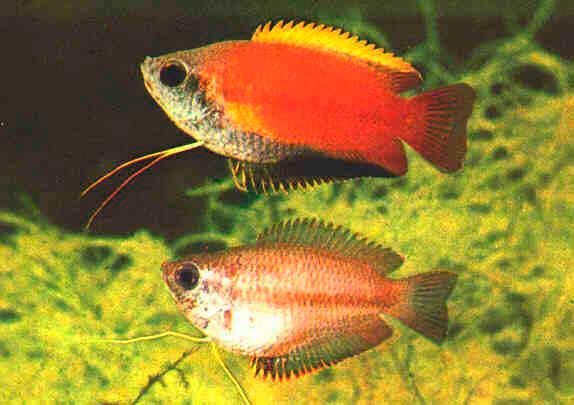
The best results, of course, you will get if you prepare in advance and stimulate reproduction when it is convenient for you. In the wild, spawning coincides with the onset of monsoon rains. So fresh water stimulates spawning. Spawning grounds should be densely planted with plants. Species such as cassava or riccia should also float on the surface.
After the nest is built, the pair settles under the nest and spawning begins. At one time the female lays about ten eggs. In total, a well-prepared female can have up to 300 eggs. Usually about 150. After spawning is completed, it is better to remove the female.
We’re nursing the fry
Incubation lasts about two days. After another two days, the fry will swim. After that, you can carefully remove the male. Fry are small, so the starting food – infusoria. As they grow, the fry are transferred to larger feed. As necessary, they are dispersed to larger dwellings.
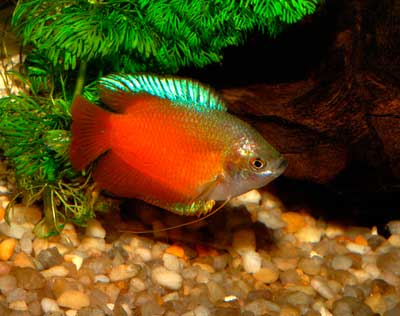
Honey gourami is now found in our aquarists a little less often than before. In pursuit of exotics, we are looking for new species not contained by anyone before. But in my opinion, coliza honey surpasses in its decorativeness of many species that have now appeared at amateurs.
